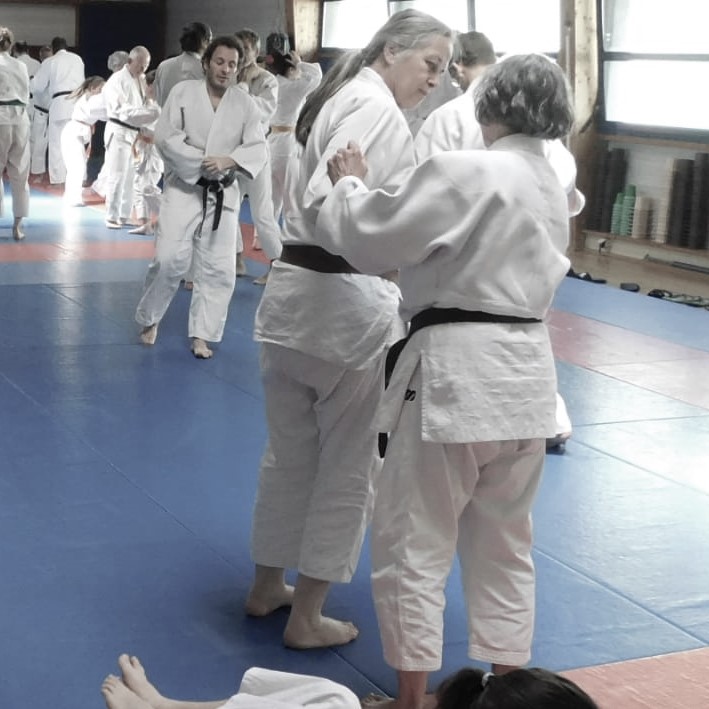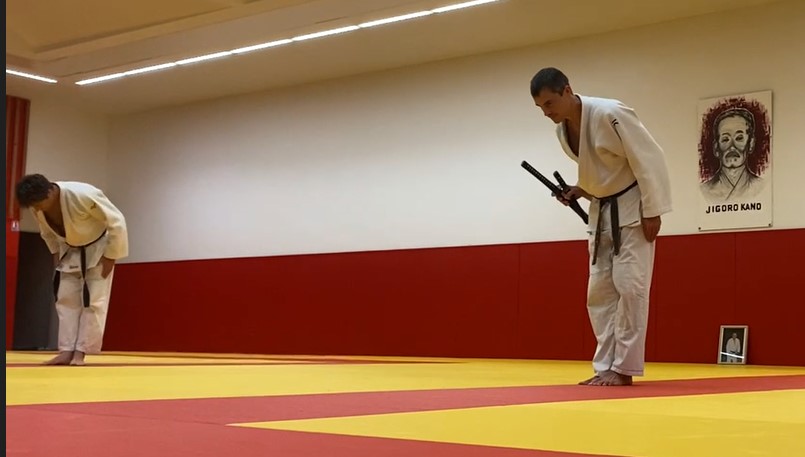While the arts of combat are present in most cultures around the world, they have never reached such a degree of development and sophistication as in Japan.
The Japanese, unlike other populations of Asia, preferred to adopt a defence system with bare hands, rather than techniques of percussion.
Also, the traditional Japanese martial arts are represented mainly by two great currents of martial arts, Aikido and Ju-jitsu and consequently Junomichi which is a highly specialised form of Ju Juitsu (Original Judo).
Karate, contrary to popular belief, is not strictly speaking a traditional Japanese martial art.
It originated from the island of Okinawa (Japanese island). It was not introduced in Japan until the beginning of the 20th century. Still, if the aikidoka faces his opponent at a distance of grasp, the ju-jitsuka practices the fight in hand-to-hand combat.
Originally developed by the “samurai”, Ju-jitsu and Junomichi (ju: flexibility, jitsu: technique, michi like do means the way) include a wide range of techniques of throwing, locking, and strangulation, whether for combat standing or on the ground.
On the other hand, percussion techniques (with hands or legs) are rare and direct but effective (they aim to strike the pressure points), see kyusho (kyuushoo).
Throws, using the principles of lever and pendulum, involve the violent fall of the adversary on the ground, which constitutes the virtual end of the fight.
Locks and strangulations are used to put out of action or subdue an assailant, with or without prior throwing.
The keys are of two kinds, in torsion (dislocation) or in extension (rupture) of the joint, and apply either to the arms (shoulder, elbow, wrist), or to the legs (knee, ankle, foot), even in the neck (cervical vertebrae).
Some controls are done on muscles (biceps, quadriceps), by applying pressure.
Finally, blood strangulations (there are also respiratory strangulations which do not have the same consequences) aim to cause temporarily lost of conscious (for at least thirty seconds, no more, otherwise…).
These latest techniques are not intended to suffocate the person, but to cut off the blood flow to the brain. These strangulations do not lead to the death of the person, or sequelae provided you have safe control and are being very careful.
By the nature of the techniques, Ju-jitsu and then Junomichi are particularly interesting martial art. Its effectiveness is essentially based on its technical quality, unlike the arts of percussion (such as Kung-fu or Karate), where the strength of both the person giving the blows and the one receiving them are essential factors.
However, despite its technical richness and its formidable reputation, traditional Ju-jitsu began to disappear from the Meiji era (1868-1912).
Today, therefore, even in Japan, this art remains rare.
Also: it is important that today, Brazilian Jujitsu, Sambo and Sports Judo are sports by no means martial arts.

